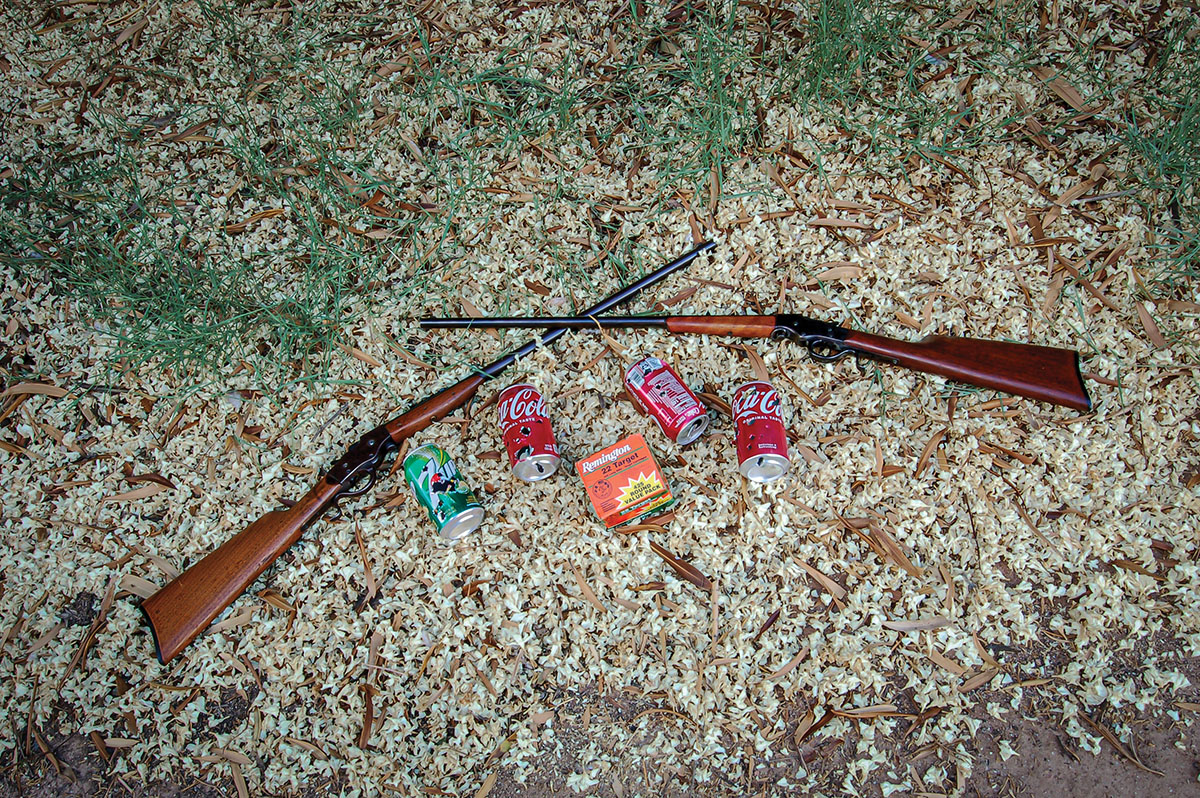
Plinking pop cans is a pleasant way to spend an afternoon.
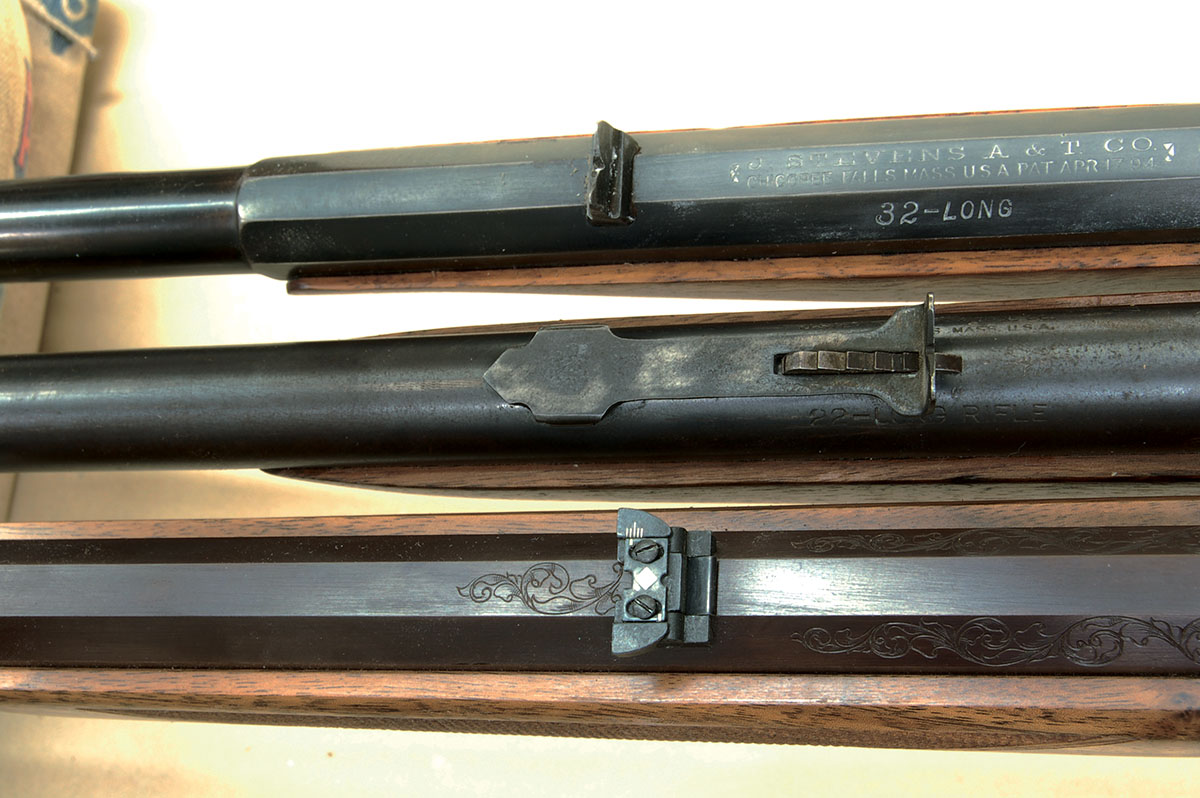
Shown from top to bottom are the solid steel rear sight on the earliest Favorite, the sporting adjustable offered later and the common modern replacement.
Many rifle fans demand their guns to be in near-new condition. Lesser riflefolk aren’t so particular. We regularly repair overused rifles in order to have a new toy to play with. Yes, I and all the shooters I know play with our firearms, spending many happy hours studying, rebuilding and reshooting. It is truly sad that there are so many unhappy and ignorant people working day and night to end our fun.
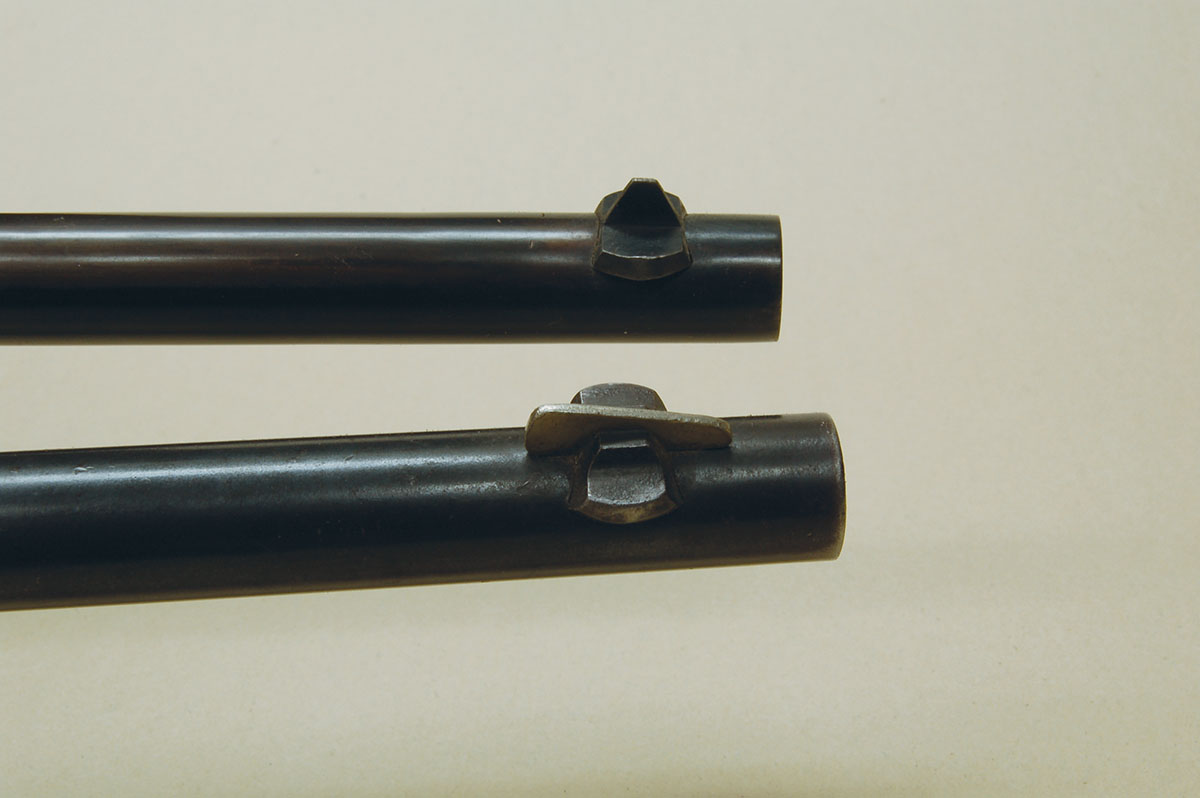
The oldest Favorites had a one-piece front sight (top). Later, Rocky Mountain front sights were available for an extra charge (bottom) and still later, Rocky Mountains were standard.
Mechanisms, simplicity of design and great variety are everything. We therefore find single-shot 22 rimfires, known as “Boys’ Rifles,” to be simply irresistible. As the name implies, these rifles were given as educational toys to boys and girls beginning at whatever age they could hold a 4-pound rifle. The time frame for this was about 1880 to 1950. One could argue that this was better than today’s computer games and cell phones. Boys’ Rifles were sold in hardware stores, farm stores, gas stations and by mail from dozens of retailers and given as prizes for selling magazine subscriptions. To give some idea of the variety produced, a friend sold half of his collection and still had nearly 100 guns left.
Where to begin? That’s easy because the Stevens Favorite is the most common. Besides sheer numbers, Favorites often have shootable bores as rusted and pitted bores are the main obstacle to shooting any Boys’ Rifle. However, correcting this problem in the home shop will be explained before this series ends.
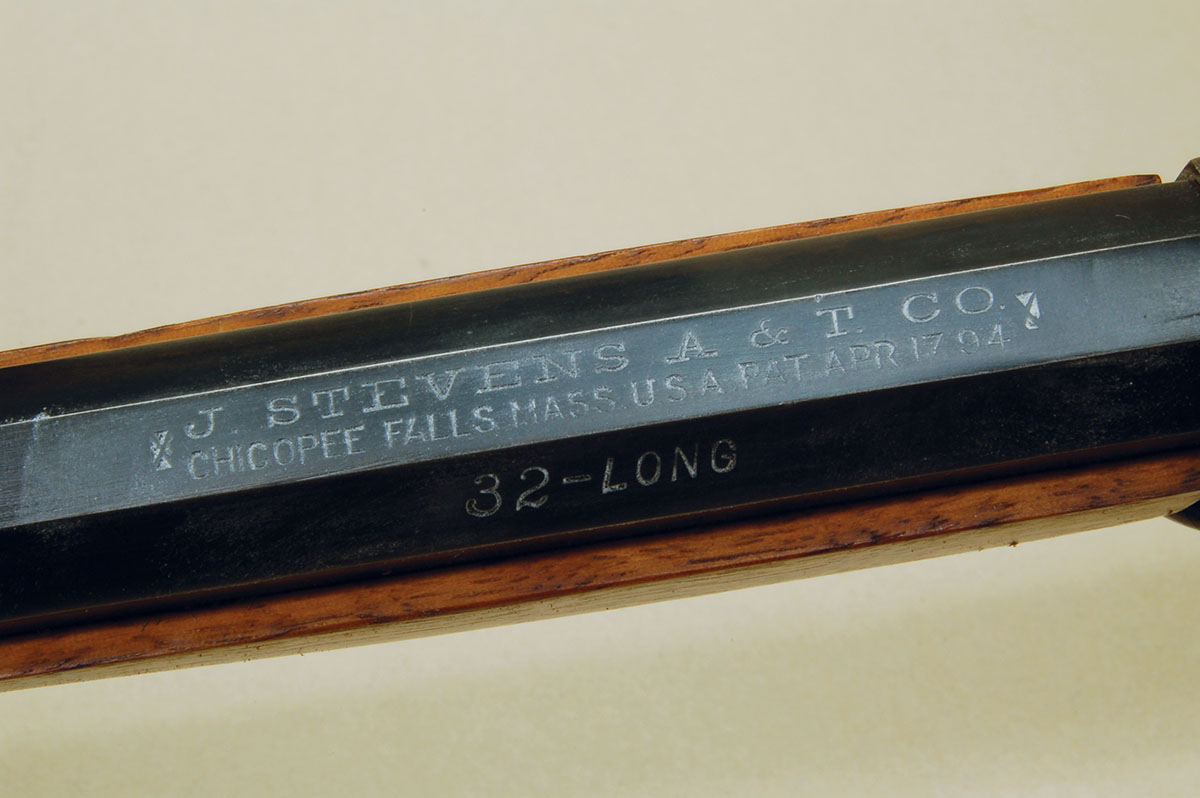
This shows the Stevens marking on the top flat of the barrel of the earliest Favorite.
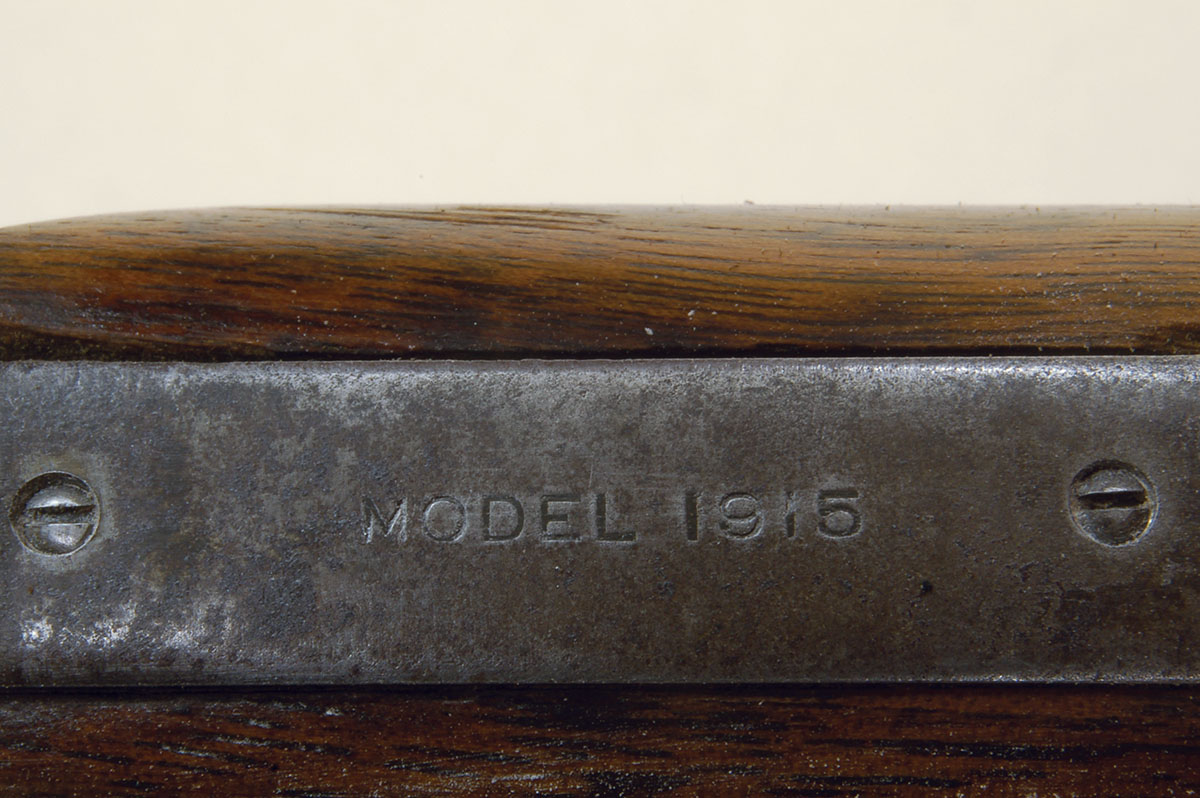
The marking on a Model 1915 Favorite top tang.
When considering a Favorite for purchase, a simple test is necessary. First, close the action and lower the hammer to its fired position. Now, push down on the opening lever. When the lever first starts to move, the hammer should be lifted off the firing pin and back out of the way so the breechblock can pivot down exposing the chamber. This hammer movement is caused by an arm on a link connecting the breechblock and lever. (See the photos on page 15.)
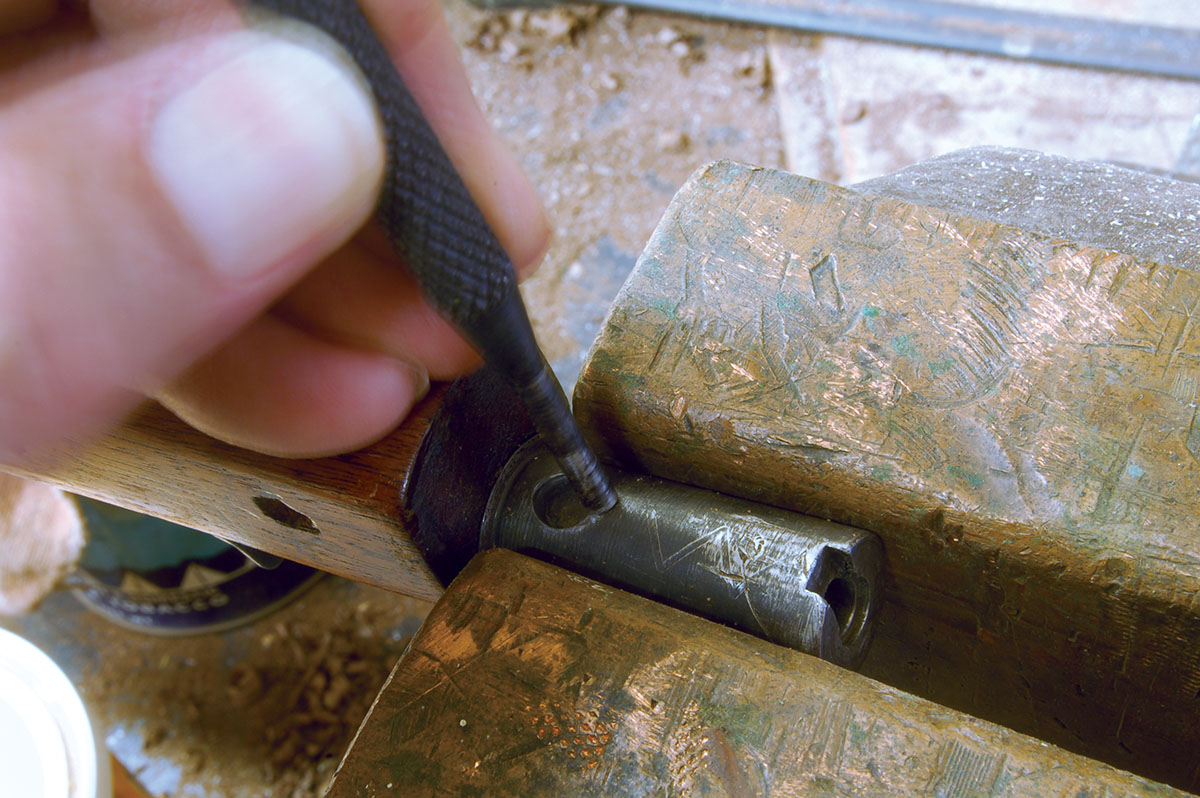
If the barrel/receiver joint is loose, tapping on the takedown screw hole will generally correct it.
Pulling rearward on the lever now pivots the breechblock up and allows the hammer to move forward, but its movement must stop before it touches the firing pin. The sear surface of the trigger should have dropped into the “half cock” or “safety” notch in the hammer when the action was opened, limiting forward movement. If this doesn’t happen, the gun may fire if the hammer is bumped. The cause is either wear on the link arm or damaged sear surfaces. Replacement parts are required or welding, machining and rehardening (expensive).
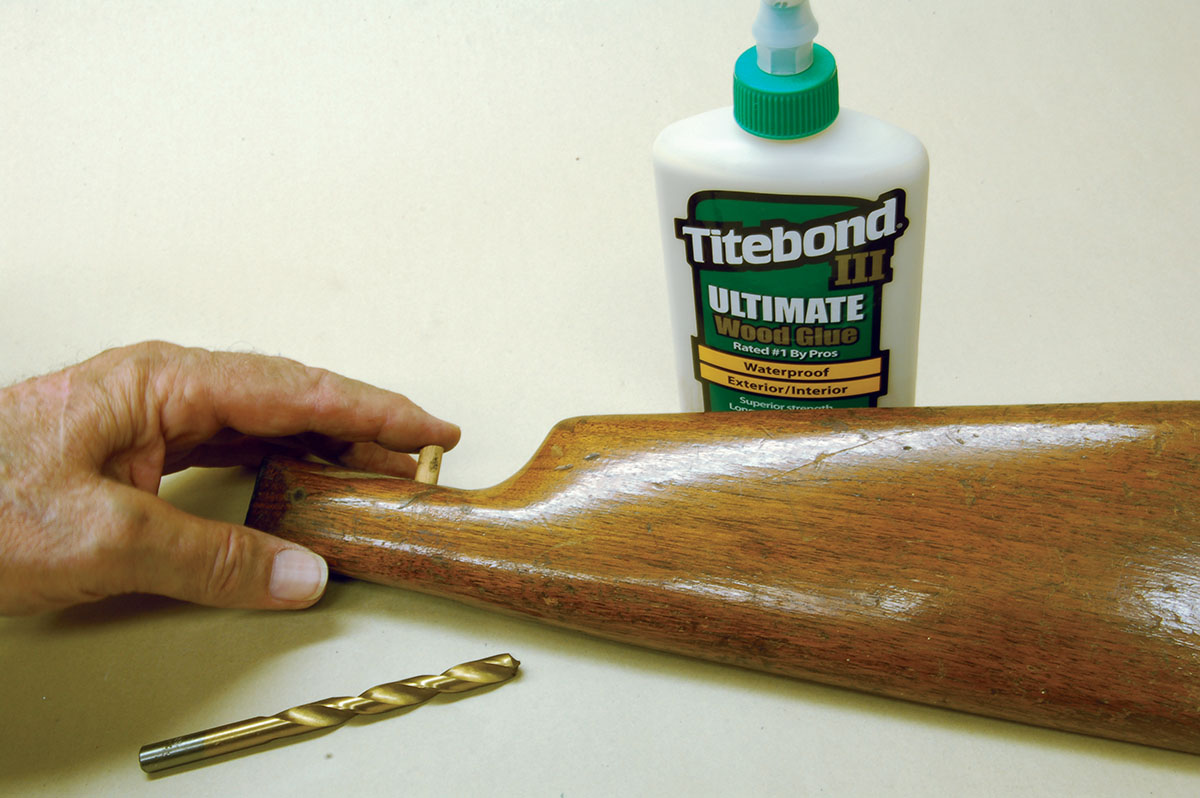
Many Boys’ Rifles have stripped tang screws. Drilling out, gluing in a plug and redrilling for tang screws solves the problem permanently.
Disassembly of a Favorite is simple. The breechblock pivots on a cross-action screw, as does the opening lever. Remove the two screws and the block/link/lever will drop out the bottom of the receiver. One screw positions the hammer and trigger as well. Prior to 1915, one screw held a flat mainspring in place, then this spring was changed to a coil-type held by a spring guide. The mainsprings on all Boys’ Rifles were quite strong when new because hammers were small and light compared to the centerfire actions and swing through shorter arcs. This may be why bolt-action, single-shot Boys’ Rifles having a large knob at the rear of the bolt that was pulled to cock became so popular starting in the early 1900s.
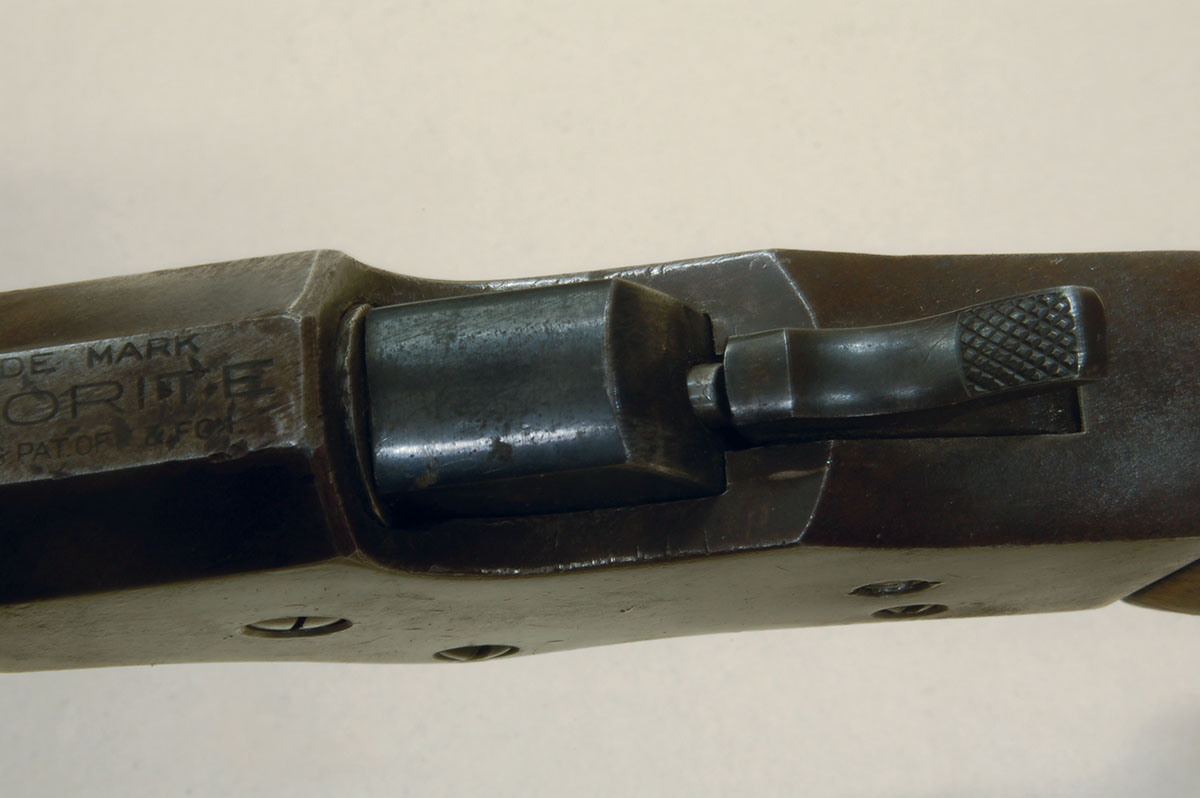
The hammer is not touching the firing pin, which must be the case when the action is closed.
Many folks will question trigger pull weights. I tested eight Favorites that did not appear to have had any trigger work done. One measured 2.75 pounds, the rest were between 3.4 and 4.7 pounds. If below the first figure, the case hardening may be wearing through, decreasing sear engagement. If the pull is greater than the top number, someone has been reshaping sear surfaces. Both conditions require a gunsmith who understands the sear geometry of hammer guns to recut and reharden the parts.
The most common is looseness in the barrel/receiver takedown joint. This is due to deformation of the
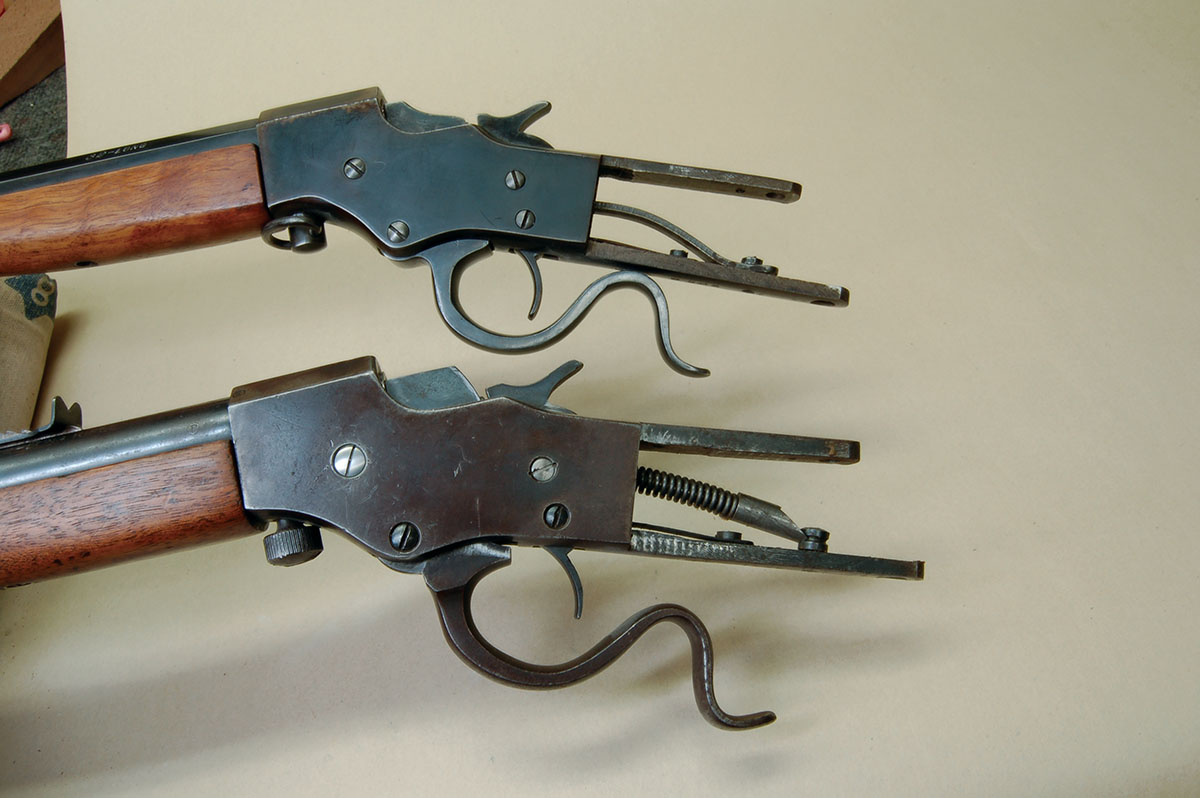
Early Favorites had flat mainsprings (top), while the 1915 Model used a superior coil spring (bottom) on a spring guide.
takedown screw recess in the barrel shank and tightening the takedown screw with pliers! All that is usually necessary is to peen the deformed metal at the breechblock end of the hole back into place. The metal is quite soft. Remember, the takedown screw should be finger tight only.
Lever looseness (sometimes called lever droop) when the action is closed is a good indication of how
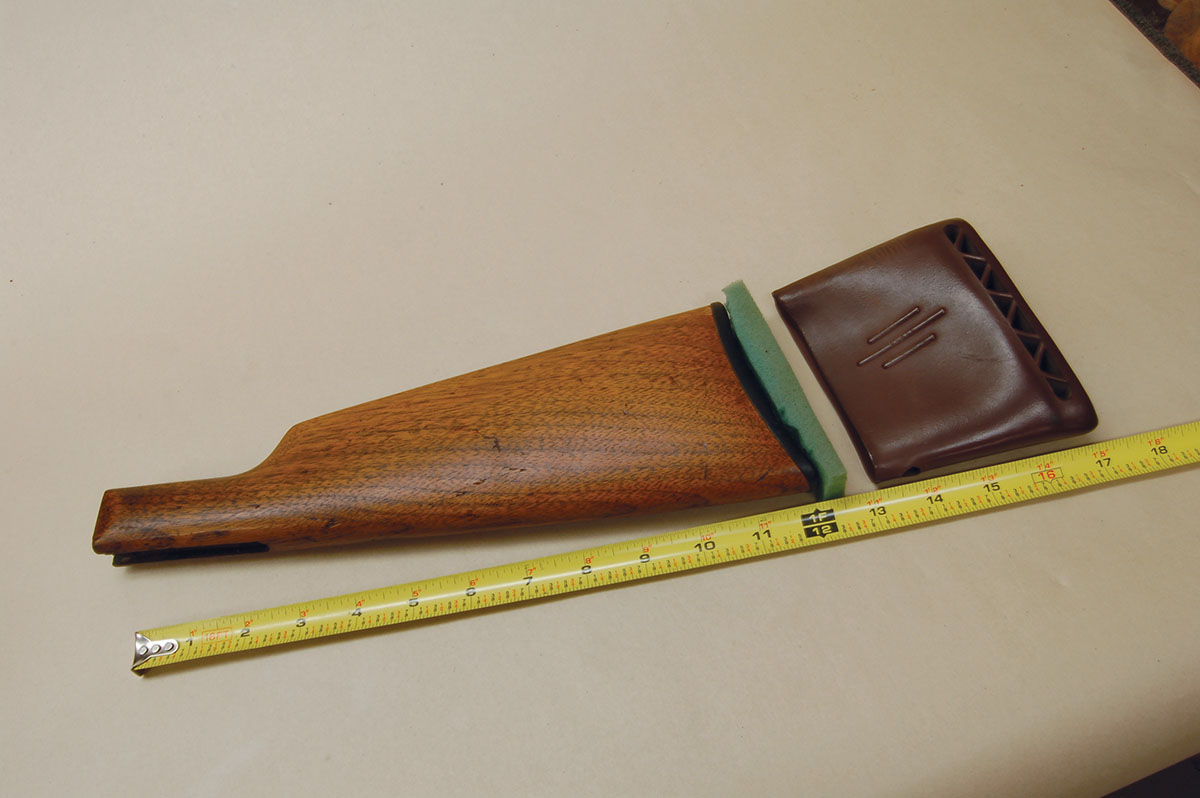
Too short of a length of pull may be corrected with a stretch-on recoil pad. A thin spacer will flatten a curved buttplate.
much a Favorite has been used. It should be tight against the action body. This fit is directly determined by how tight the breechblock bears against the rear of the barrel. An eighth of an inch or less of drop is just annoying; more indicates wear in the lever/link/breechblock assembly or excessive looseness in the takedown joint. In my “Light Gunsmithing” column in
Rifle No. 266 (January – February 2013) and
Rifle No. 267 (March – April 2013) I showed how to make a new link and other more involved work needed to build a custom rifle on the Favorite action.
Other looseness occurs in the buttstocks. Years of use and abuse are the reasons. Only one small wood screw at the end of each tang holds the stock in place. Threads in the holes were probably stripped years ago. Drill out the holes to 3⁄8 inch and glue in a hardwood dowel. When it is certain that the glue is dry, drill another screw hole for an invisible repair.
Being intended for kids, some stocks can be a bit short. A simple fix is the use of a small size “stretch-on” rubber recoil pad. Up to 1 inch in pull length can be added. If the buttplate is curved, a piece of Styrofoam is cut to fit the curve then cut flat on the rear. Duct tape this to the stock, stretch on the recoil pad and a better stock fit is assured.
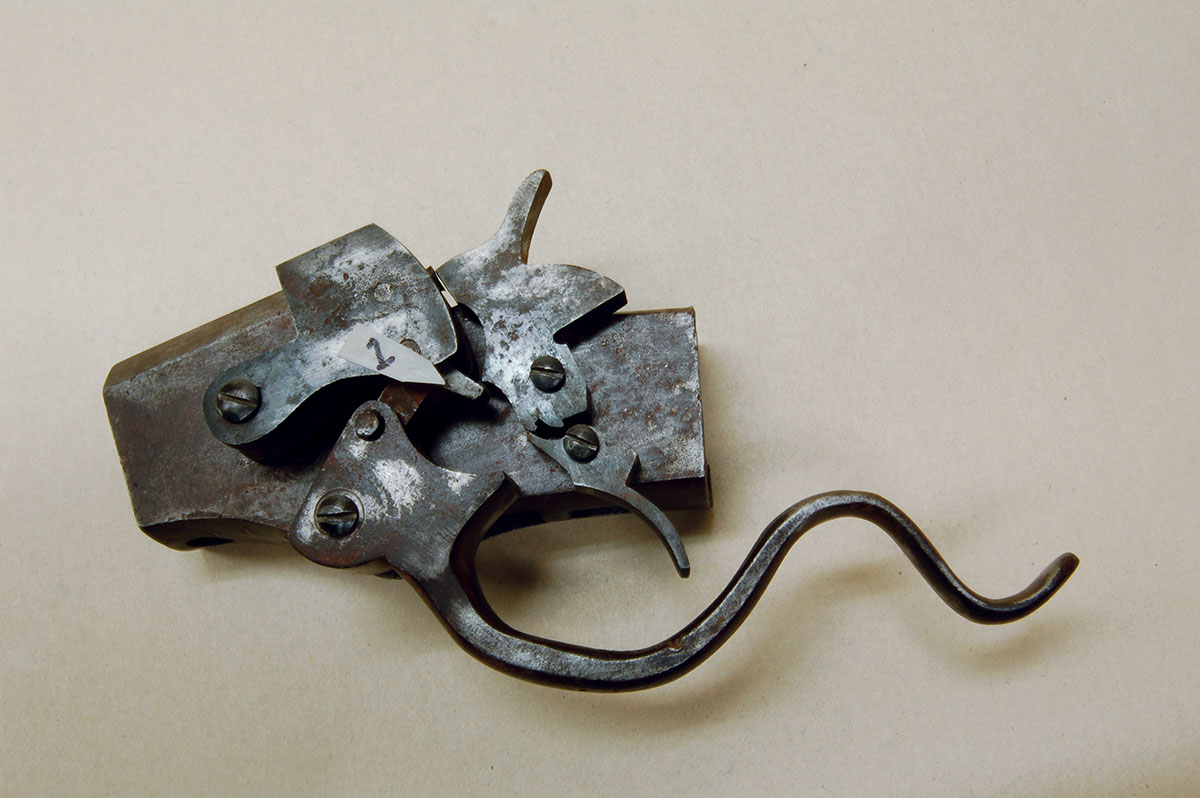
Arrow 1 points to the arm on the link referred to in the text explaining the safety test for Favorite actions. Note that the action is in fired condition.
Speaking of stocks, if a Favorite is in otherwise good condition but the stock has been broken and repaired using glue, epoxy, nails, screws, rivets, pins and four types of tape, make a new one! Favorite stocks are simple. Two slots for the tangs and two screw holes and the fitting is done. The comb height and pull length can now be whatever is needed. A suitable piece of walnut is available from any wood hobby shop for about $10.
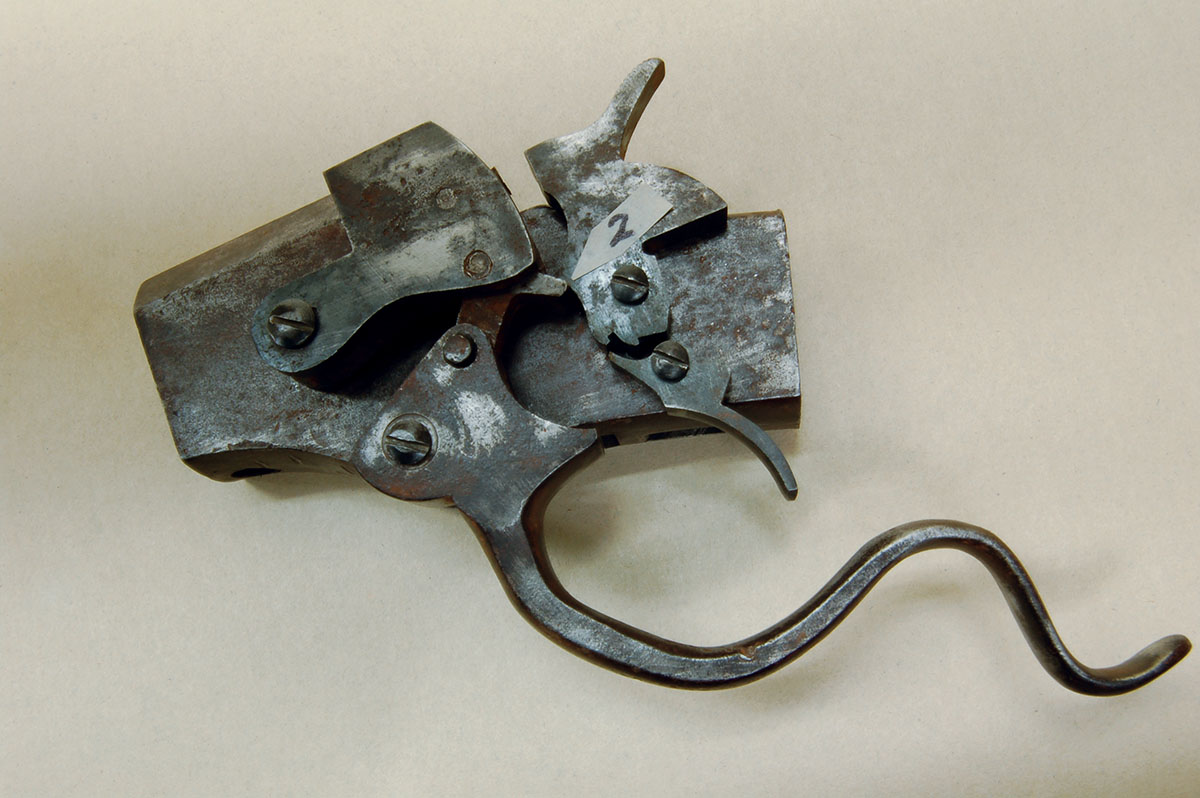
As the lever starts to move to open the action, the arm contacts the hammer, pushing it rearward off the firing pin (arrow 2).
Sights are next. Early Favorites had the one-piece open iron variety sliding in dovetails. Elevation changes were done by filing or replacement. Soon, a sliding elevator rear was available for .75 cents extra. By 1908, this sight and a Rocky Mountain front were standard on Favorites. These are shown in the photos. Commonly seen today are Rocky Mountain fronts (often with the silver blade missing) and Lyman No. 16 (or a copy) folding rear with elevation adjustment. Whatever works.
Finally, there are firing pins. These are commonly found with damaged tips and battered hammer contact surfaces. There seem to be slight differences in dimensions so nothing definite can be stated. It is held in place by a cross pin through the breechblock and a flat notch cut into the firing pin’s bottom surface. I use a W-1 drill rod for these parts or the round shanks of worn-out Phillips screwdrivers if they are soft enough to lathe turn. Be certain the firing pin moves freely in its recess.
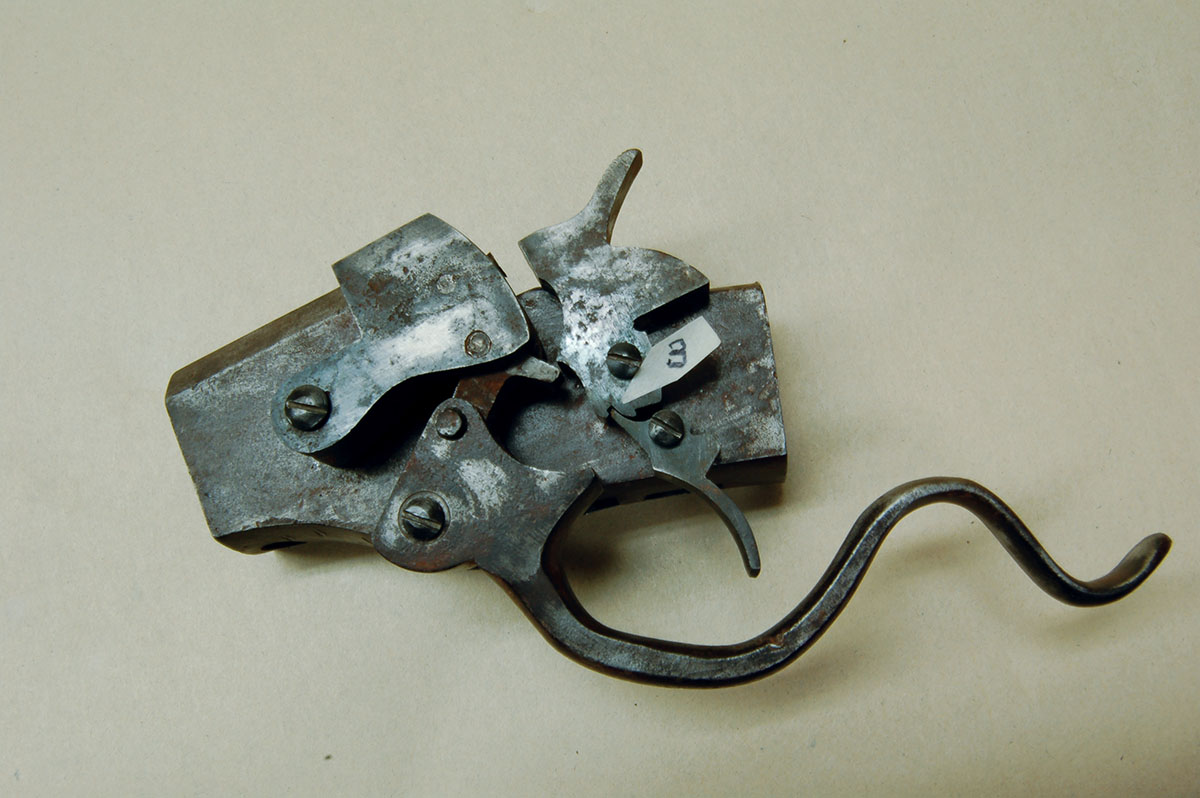
As the action nears closed, the arm releases the hammer because the trigger sear has dropped into the hammer safety notch (arrow 3). And yes, this Favorite action has no tangs, as someone cut them off!
Assemble everything, close the action and lower to push the new firing pin forward. Its tip should contact the bottom of the chamber rim recess and must be shortened until it just misses contact. A bit of modeling clay in the rim recess will show this clearly. The fit here must be precise because too long a tip will break if dry-fired or burr the chamber rim recess causing difficult chambering and extraction.
Now, push the firing tip back into the breechblock. It must obviously go in a bit past flush with the breechface. If not, cut back the retaining pin flat on the firing pin until it does. The rear of the firing pin can now be shortened until it protrudes from the rear of the breechblock, say, .015 inch with the hammer down. Needless to say, hammer guns should never be dry-fired.
Ammunition for all the little rifles should have been covered, but as usual, I am out of space for this edition. It will be first up next time, along with a couple of other fascinating early 22 rimfire single shots.















